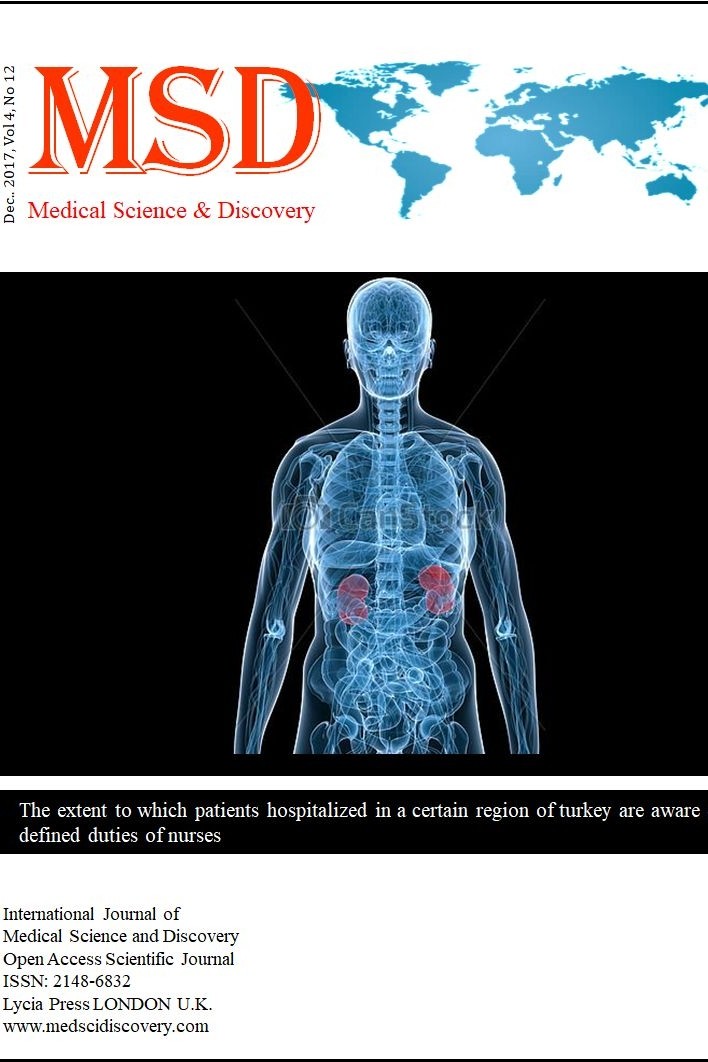Clinical and pathological features of isolated pulmonary and liver recurrences in endometrial cancer
Clinical and pathological features of isolated pulmonary and liver recurrences in endometrial cancer.
___
- 1. Ferlay J, Soerjomataram I, Dikshit R, Eser S, Mathers C, Rebelo M, et al. Cancer incidence and mortality worldwide: sources, methods and major patterns in GLOBOCAN 2012. Int J Cancer. 2015;136(5):E359-86.
- 2. Lewin SN, Herzog TJ, Barrena Medel NI, Deutsch I, Burke WM, Sun X, et al. Comparative performance of the 2009 international Federation of gynecology and obstetrics' staging system for uterine corpus cancer. Obstet Gynecol. 2010;116(5):1141-9.
- 3. Fung-Kee-Fung M, Dodge J, Elit L, Lukka H, Chambers A, Oliver T, et al. Follow-up after primary therapy for endometrial cancer: a systematic review. Gynecol Oncol. 2006;101(3):520-9.
- 4. Ueda SM, Kapp DS, Cheung MK, Shin JY, Osann K, Husain A, et al. Trends in demographic and clinical characteristics in women diagnosed with corpus cancer and their potential impact on the increasing number of deaths. Am J Obstet Gynecol. 2008;198(2):218 e1-6.
- 5. Huang HJ, Tang YH, Chou HH, Yang LY, Chao A, Huang YT, et al. Treatment failure in endometrial carcinoma. Int J Gynecol Cancer. 2014;24(5):885-93.
- 6. Turan T, Ureyen I, Duzguner I, Ozkaya E, Tasci T, Karalok A, et al. Analysis of patients with stage IIIC endometrial cancer. Int J Gynecol Cancer. 2014;24(6):1033-41.
- 7. Barlin JN, Wysham WZ, Ferda AM, Khoury-Collado F, Cassella DK, Alektiar KM, et al. Location of disease in patients who die from endometrial cancer: a study of 414 patients from a single institution. Int J Gynecol Cancer. 2012;22(9):1527-31.
- 8. Descamps P, Calais G, Moire C, Bertrand P, Castiel M, Le Floch O, et al. Predictors of distant recurrence in clinical stage I or II endometrial carcinoma treated by combination surgical and radiation therapy. Gynecol Oncol. 1997;64(1):54-8.
- 9. Bouros D, Papadakis K, Siafakas N, Fuller AF, Jr. Patterns of pulmonary metastasis from uterine cancer. Oncology. 1996;53(5):360-3.
- 10. Mariani A, Webb MJ, Keeney GL, Calori G, Podratz KC. Hematogenous dissemination in corpus cancer. Gynecol Oncol. 2001;80(2):233-8.
- 11. Dowdy SC, Mariani A, Bakkum JN, Cliby WA, Keeney GL, Podratz KC. Treatment of pulmonary recurrences in patients with endometrial cancer. Gynecol Oncol. 2007;107(2):242-7.
- 12. Otsuka I, Ono I, Akamatsu H, Sunamori M, Aso T. Pulmonary metastasis from endometrial carcinoma. Int J Gynecol Cancer. 2002;12(2):208-13.
- 13. Sohaib SA, Houghton SL, Meroni R, Rockall AG, Blake P, Reznek RH. Recurrent endometrial cancer: patterns of recurrent disease and assessment of prognosis. Clin Radiol. 2007;62(1):28-34; discussion 5-6.
- 14. Pecorelli S. Revised FIGO staging for carcinoma of the vulva, cervix, and endometrium. Int J Gynaecol Obstet. 2009;105(2):103-4.
- 15. WHO handbook for reporting results of cancer treatment1979.
- 16. Gadducci A, Cavazzana A, Cosio S, C DIC, Tana R, Fanucchi A, et al. Lymph-vascular space involvement and outer one-third myometrial invasion are strong predictors of distant haematogeneous failures in patients with stage III endometrioid-type endometrial cancer. Anticancer Res. 2009;29(5):1715-20.
- 17. Blecharz P, Urbanski K, Mucha-Malecka A, Malecki K, Reinfuss M, Jakubowicz J, et al. Hematogenous metastases in patients with Stage I or II endometrial carcinoma. Strahlenther Onkol. 2011;187(12):806-11.
- 18. Tangjitgamol S, Levenback CF, Beller U, Kavanagh JJ. Role of surgical resection for lung, liver, and central nervous system metastases in patients with gynecological cancer: a literature review. Int J Gynecol Cancer. 2004;14(3):399-422.
- 19. Chi DS, Fong Y, Venkatraman ES, Barakat RR. Hepatic resection for metastatic gynecologic carcinomas. Gynecol Oncol. 1997;66(1):45-51.
- 20. Wolf RF, Goodnight JE, Krag DE, Schneider PD. Results of resection and proposed guidelines for patient selection in instances of non-colorectal hepatic metastases. Surg Gynecol Obstet. 1991;173(6):454-60.
- 21. Knowles B, Bellamy CO, Oniscu A, Wigmore SJ. Hepatic resection for metastatic endometrioid carcinoma. HPB (Oxford). 2010;12(6):412-7.
- ISSN: 2148-6832
- Başlangıç: 2014
- Yayıncı: Zafer AKAN
Aktham Adel shoukry1*, Mohamed Magdy bakr2, Sameh Mekhemer3, Salah Yassin3
Aktham SHOUKRY, Mohamed BAKR, Sameh MEKHEMER, Salah YASSİN
Bilateral frontal sinus mucocele: Histopathological and clinical review of a case
Clinical and pathological features of isolated pulmonary and liver recurrences in endometrial cancer
Derman BASARAN, İsin UREYEN, Mustafa KARALOK, Osman TURKMEN, Gunsu KİMYON, Mehmet CELİK, Tolga TASCİ, Ahmet TURAN
Prenatal diagnosis of a giant fetal cervical teratoma by magnetic resonance imaging: a case report
Alkim Gulsah Yildirim, Atalay Ekin, Cenk Gezer, Cuneyt Eftal Taner, Ulas Solmaz, Naciye Gezer, Kevser Öz, Mehmet Özeren
Bekir Tasdemir, Zeki Dostbil, Ilhan Sezgin
Aysegul CEBİ, Handan MERT, Nihat MERT
Admission Characteristics and Outcomes of ED Patients With Rhabdomyolysis
Yalcin GOLCUK, Burcu GOLCUK, Murat OZSARAC, Mehmet IRİK, Ayhan KORKMAZ, Adnan BİLGE
Ovarian Immature Teratoma Detected During Pregnancy
Pinar Hasdemir, Tevfik Guvenal, Serkan Menekse, Ulas Solmaz, Ali Kandiloglu, Faik Koyuncu, Ali Ayhan
The Effect of Group-Discussion on the Nurses' Performance in Recognizing Patients' Rights
Hossein Ebrahimi, Hossein Namdar Arashtanab, Mohammad Asghar Jafar Abadi, Zeynab Qasemiyan Khojaste
Factors triggering epileptic seizures in patients over 50 years
Serkan Demir, Rifat Togrol, Ali Sonkaya, Mustafa Kendirli, Semih Alay, Tugba Celik, Sakir Delil, Mehmet Ozdag
